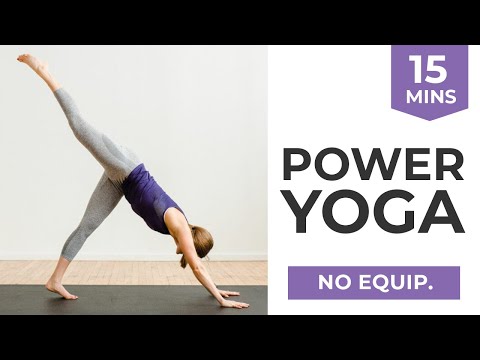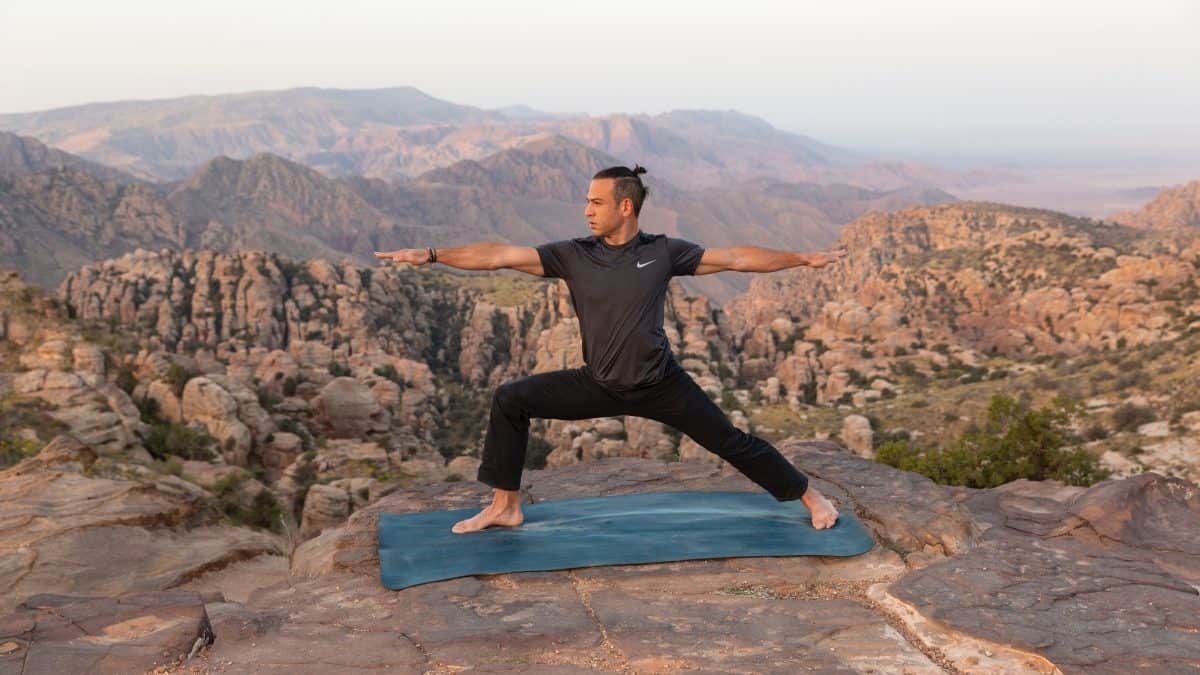
Yoga can be very beneficial for hypothyroidism. It is a journey through the self that helps to reverse the negative effects of hypothyroidism. Many people have thyroid disorders. They can have a significant impact on metabolism, growth and body temperature. A thyroid disorder is characterized by unstable hormones, and by practicing yoga you can prevent and control the symptoms of a thyroid condition.
Yoga poses can be a great way of improving thyroid health. The basic fish and downward facing dog pose will stimulate the thyroid gland, and help promote overall health. The cobra is a restorative pose that does not press on the neck. For support, you can use a blanket or pillow to help you in this pose. Begin by placing your right foot against the wall, and then bend your legs to the right, allowing your palms to press down on your neck. Once you feel comfortable with this pose, inhale deeply and continue to look.

The wheel pose is the next position. This is one of yoga's most popular poses for hypothyroidism. The purpose of this pose is to improve the flow of blood to the thyroid gland. You do this by bending your knees and keeping your flexed. This pose also strengthens abdominal muscles and calms your nervous system. While you are undergoing treatment for hypothyroidism, a seated bow pose is a good one to try.
An asana to treat hypothyroidism is the upward bow or Urdhva Dhanurasana. This pose is good for back pain sufferers and provides energy to your thyroid gland. If you have back pain, this pose is not for you. The pose should be performed with your elbows bent.
Shoulderstand is a popular yoga posture for people with hypothyroidism. This inversion increases blood flow to the thyroid and is thought to improve the efficiency of your thyroid. The thyroid's function is also improved by tucking your chin in to the chest. To perform shoulderstand, you will need to be lying flat on your back. You will need to keep your hands by your side while you are pressed into the floor.

Camel pose is a powerful and effective posture that boosts blood circulation to the neck and helps improve blood circulation around your thyroid. It can be held for up to one minute, depending on the practitioner. To do the pose, you must be able stand straight with your knees aligned, hold the pose for at least one minute, and then breathe deeply. You should be able hold the pose for at least three minutes.
FAQ
Do I have to do it every day?
No! Get at least 30 minutes of moderate-intensity physical activity 5 days a week. It means you need to exercise hard enough or walk fast enough that you are slightly out-of- breath.
Eggs good for men
All nutrients are contained in the egg. It helps to maintain strong bones and healthy hearts and lungs and stabilize blood pressure.
Eggs are an excellent source of protein, vitamins A, B12, D, E, K, calcium, phosphorus, iron, zinc, copper, magnesium, selenium, and riboflavin.
Egg yolks are high in cholesterol. The egg yolk does not contain saturated oil. Eggs are lower in saturated fat than other foods.
They are also low-calorie and high in sodium. They are very versatile and can be cooked any way you'd like. They can be poached or scrambled, baked, hard-boiled, or fried.
They are very nutritious and easy-to-prepare.
You should eat at least two whole eggs per day. Avoid eating eggs.
Eggs provide essential nutrients needed by our bodies. You can add eggs to your daily diet now.
How many calories per day should I consume?
This will vary from person-to-person. The average is 2000 - 2500 calories per day. The factors that determine how many calories are needed for you include your gender, age, height, activity level, lifestyle, and gender.
Is it true, that too much protein can cause kidney stones?
Protein is important for maintaining healthy bones and tissue. However, too much protein can result in calcium excretion through the urine. This can lead kidney stones.
Not everyone who eats more than 2g of protein per kilogram (2.2 lbs) of bodyweight will get kidney stones. People can eat large amounts of protein and not get kidney stones.
By watching how much sodium you consume, kidney stones can be prevented. Sodium helps regulate water balance in the kidneys. Too much sodium results in a higher risk of developing kidney stones.
You may also want to reduce your protein intake in the event of kidney stones. About half of adults' daily caloric intake is made up of protein. It is possible to lose weight by cutting down on your intake of proteins.
If you do decide to eat more protein, don't go overboard. You should aim to consume less than 20% of your total calories from protein.
What kind of food should I avoid when trying to lose weight?
Avoid trans fats. Trans fats increase LDL (the harmful) cholesterol and lower HDL (the good).
Trans fats can be found in fast food, deep-fried foods, packaged baked goods, snack cake, and other processed foods.
These unhealthy fats also contribute to inflammation, leading ultimately to heart disease or diabetes.
Avoid foods that are sweetened with artificial sweeteners. Artificial sweeteners increase the risk of getting cancer.
These chemicals are found in many products, including soft drinks, candy bars, chewing gum, as well as candy bars. They also appear in meat, poultry and eggs.
Artificial sweeteners are saccharin (cyclamate), sorbitol and aspartame.
The American Heart Association recommends that these chemicals be avoided as they can damage DNA.
Does Weightlifting Burn Fat Faster?
Although weight lifting can help you lose fat more quickly, it is best to combine it with cardio exercises.
To maximize the benefits of weightlifting, you need to perform it after cardio workouts.
Weightlifting is a good way to lose weight. It increases your heart beat and oxygen consumption.
If you don't mix it with cardio, your body won't notice significant changes.
Statistics
- According to the American Academy of Dermatology (AAD), men over 50 are at a heightened risk of developing it. (healthline.com)
- 10 pounds in a month is likely during a lean bulking phase, especially for beginners. (muscleandstrength.com)
- An estimated calorie range for moderately active adult males falls between 2,200 to 2,800 calories per day, depending on age. (eatright.org)
- Get free shipping and 25% off today. (healthline.com)
- By John Thompson Take a whopping 38% off a set of PowerBlock Pros. (menshealth.com)
External Links
How To
How can a man get in shape in 30 days?
The best way to achieve fitness goals is by breaking them into small achievable steps.
Every day, you must work towards your goal. This could mean anything from doing 10 pushups for 5 minutes to running 3km.
This will ensure that you see positive results if you practice it consistently over time.
You must be consistent. You must persevere until your success is achieved.
What is the difference between Aerobic Fitness (or Anaerobic Fitness)?
Anaerobic fitness refers to the ability of our bodies to perform intense physical work without oxygen. Anaerobic pathways provide sufficient energy for high-intensity exercise. Anaerobic pathways include glycolysis and creatine phosphate.
Cardio fitness is, in contrast to aerobic fitness, the practice of sustaining low-intensity exercise. Aerobic exercise is a form of aerobic exercise in which oxygen is the primary fuel source for the cells. In other words, aerobic pathways provide more energy than anaerobic.
To run a marathon you need to first increase your aerobic capacity. If you only focus on building up your anaerobic capacity, you won't be able to finish the race.
Aerobic fitness also refers to cardiovascular fitness. The two most commonly used methods of measuring cardiovascular fitness, are VO2 Max testing and step tests.
VO2 Max Testing
The maximum amount of oxygen (O2) the body can use during exercise is called VO2 max. This test measures the amount O2 that the body can use when exercising.
This is the best test to assess cardiovascular fitness. However, the test can only be administered by highly trained professionals and requires expensive equipment.
Step Tests
Step tests are an easy but powerful way to determine your cardiovascular fitness. Based on your age and weight, they involve running or walking on a track or treadmill for a specified time.
These tests are simple to perform, cost-effective, and easily accessible from almost any location. For instance, you can walk on a treadmill for 2 minutes, rest for 1 minute, repeat this process for 20 minutes, and then stop. Throughout the session, your heart rate should be within a certain range.
This method is called the Bruce Protocol. Bruce himself was a runner who developed this protocol after he realized that his heart rate would not increase when he ran longer distances.